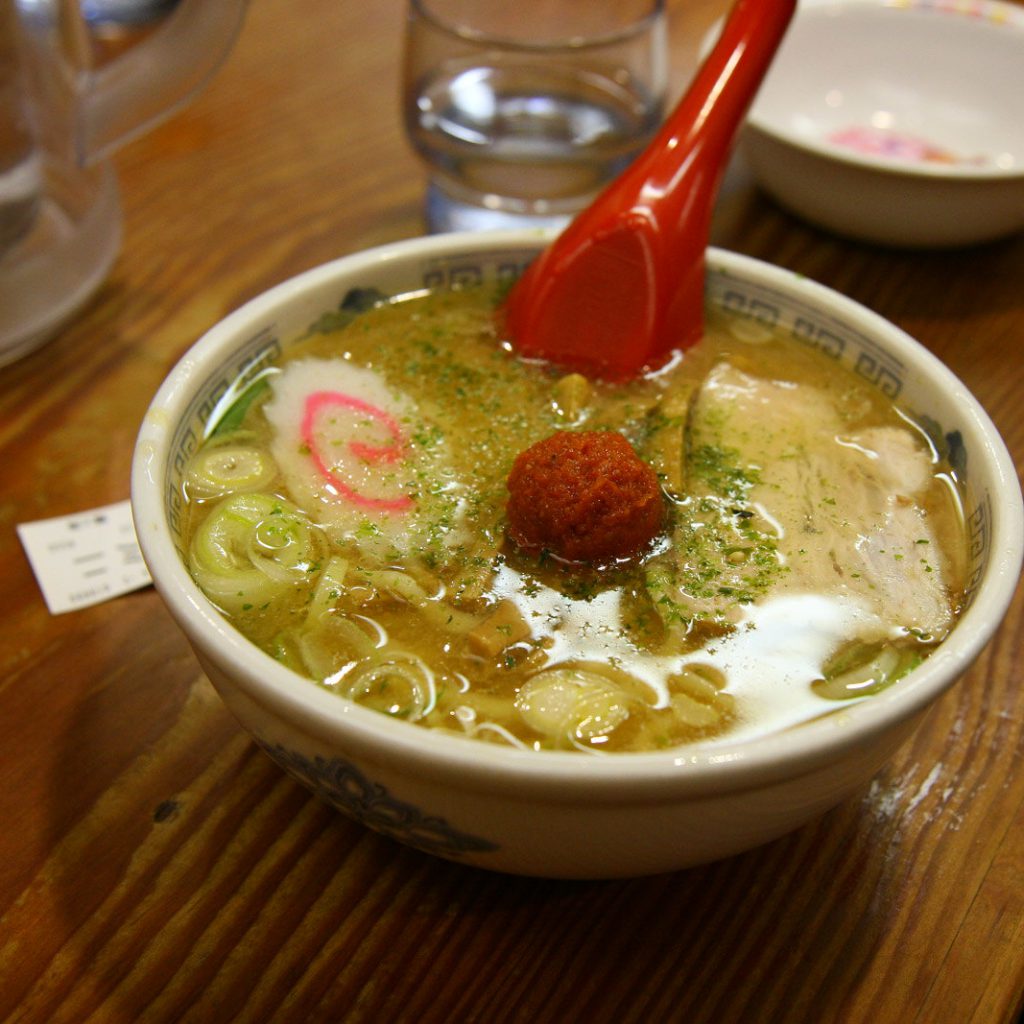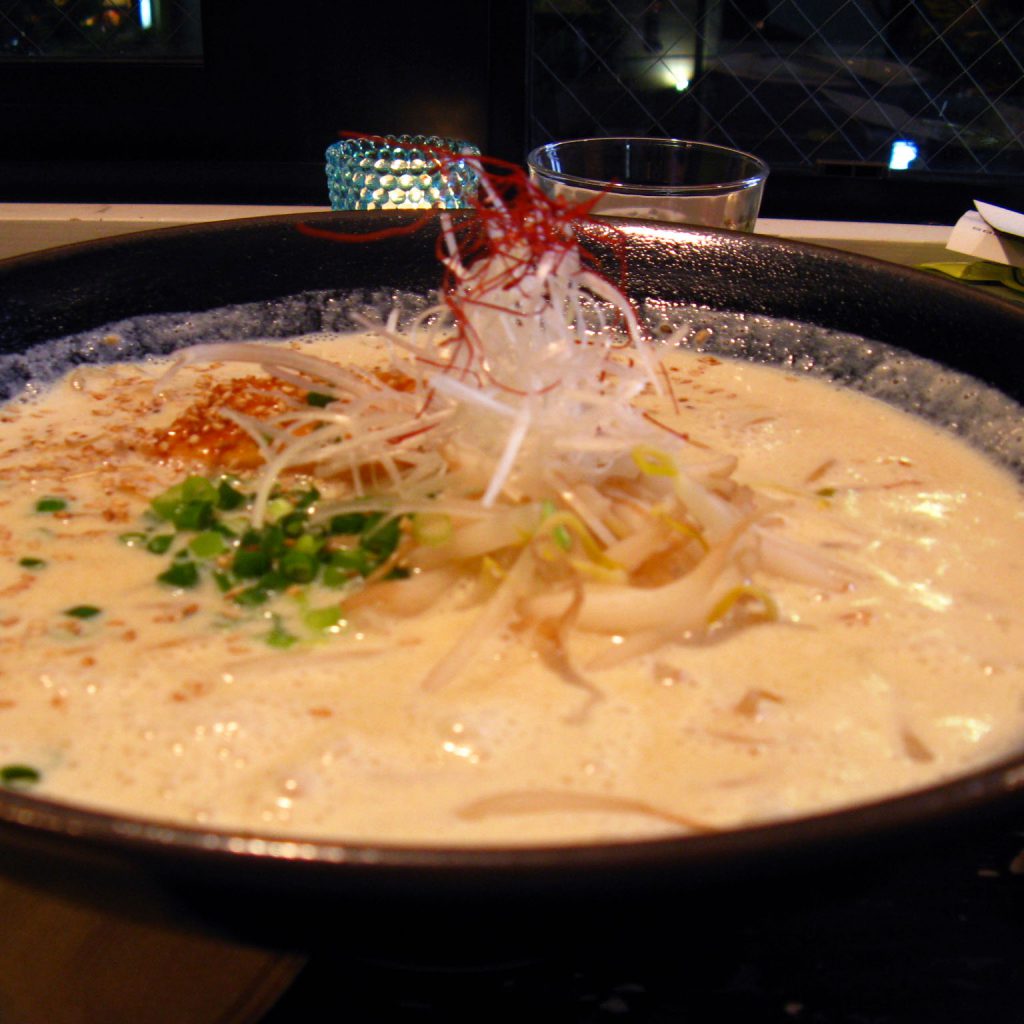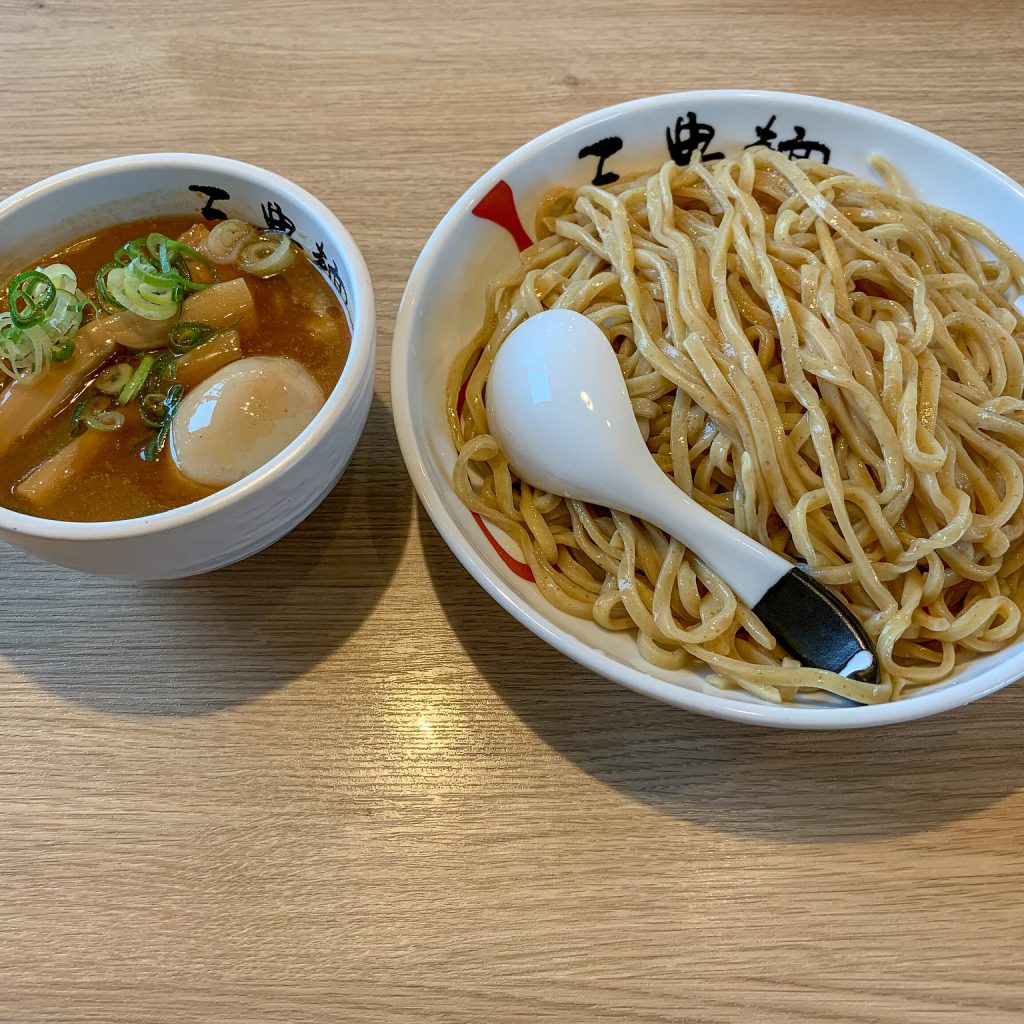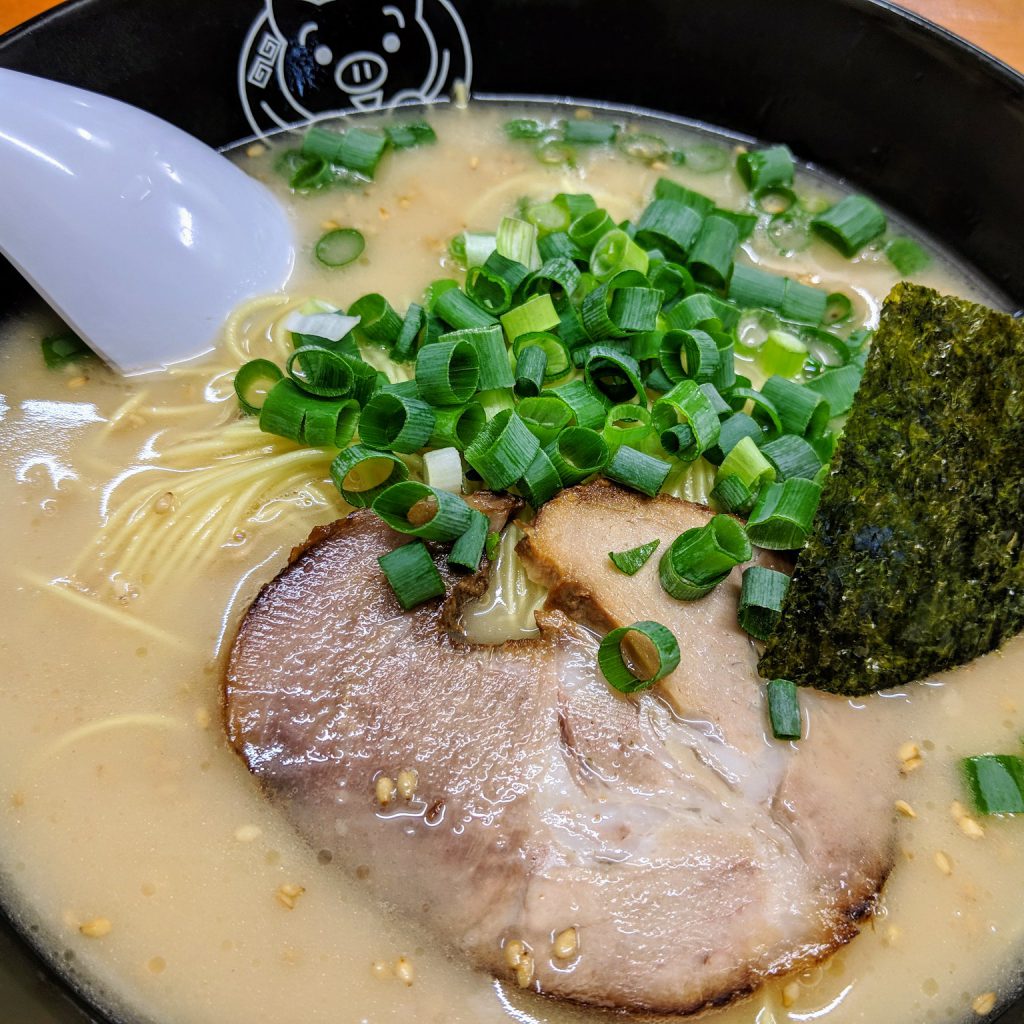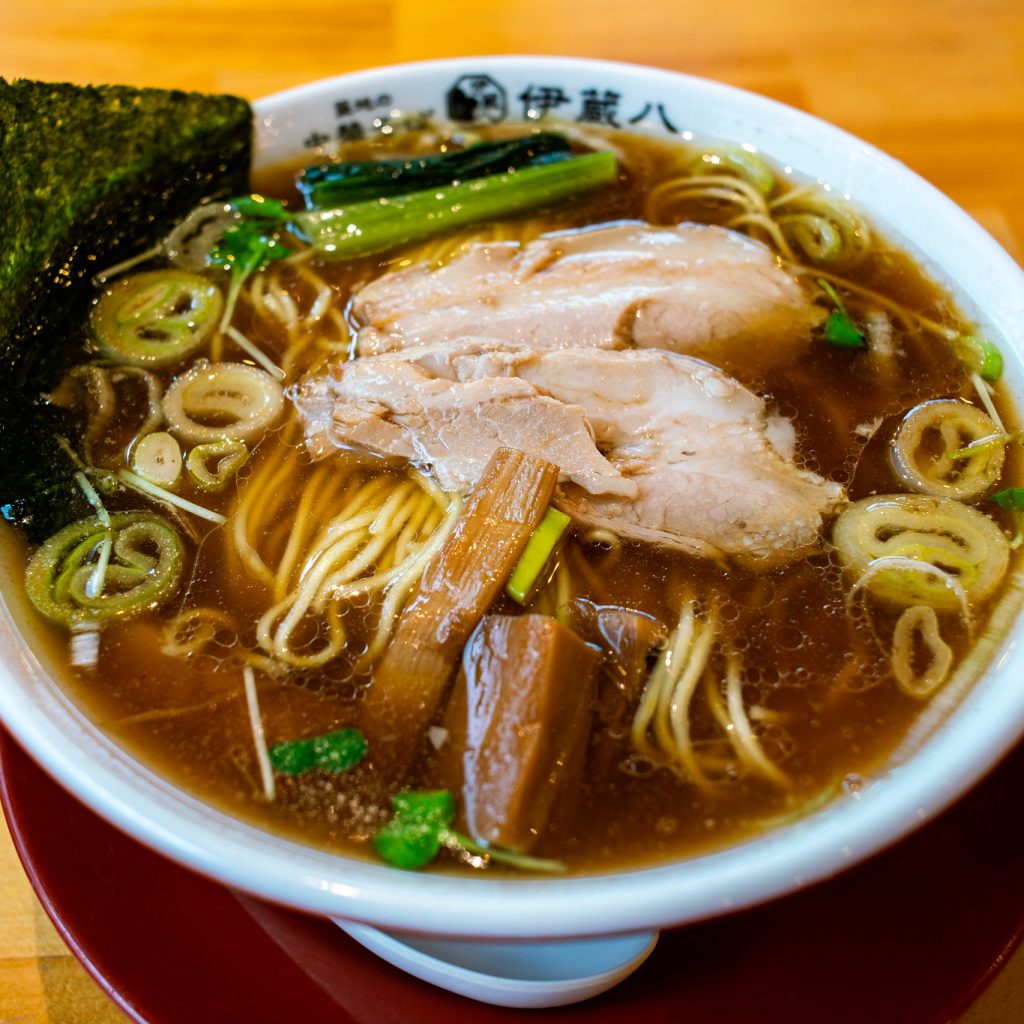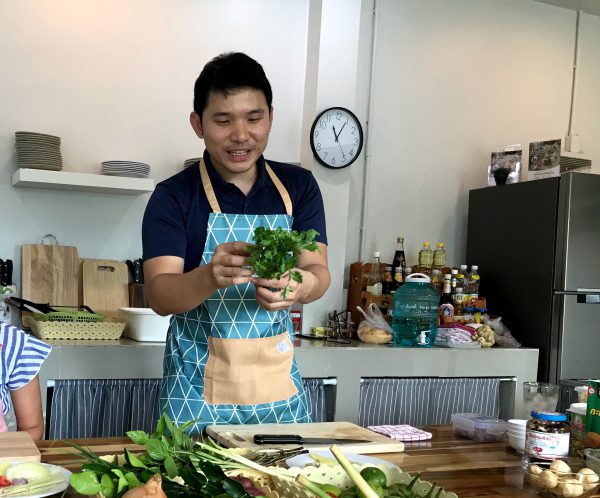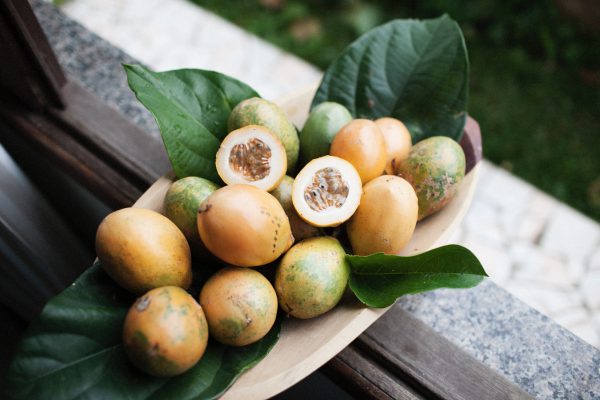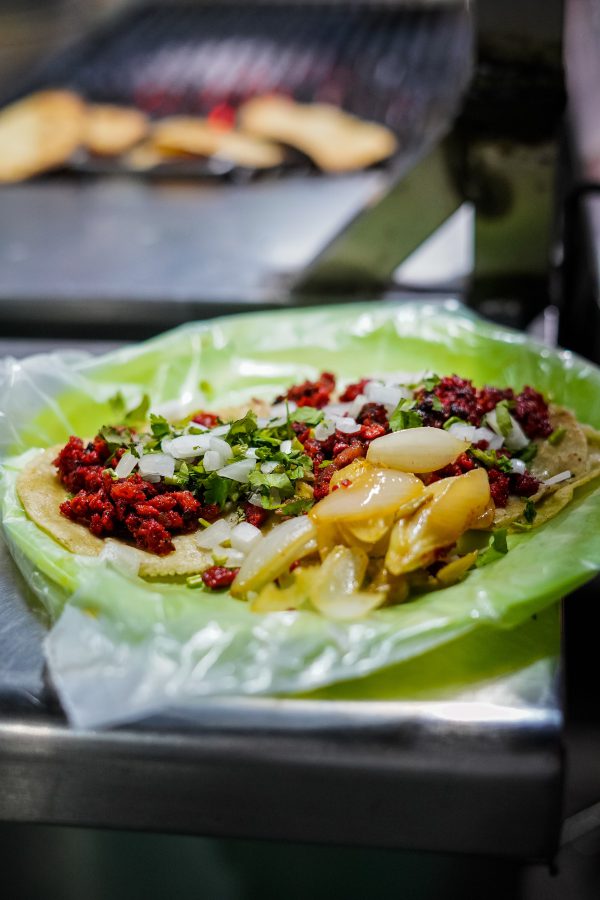Last Updated on April 06, 2023
What is Ramen?
Ramen, beyond its often-misunderstood reputation as a quick and simple meal, is actually a dish steeped in cultural heritage and culinary artistry. The combination of ingredients that make up a bowl of ramen can vary greatly from region to region and from chef to chef. This diversity of flavors and styles is what makes the world of ramen so exciting.
Let’s explore this beloved Japanese comfort food with its unique ingredients and cooking styles. By the time you finish reading this guide, we guarantee that you’ll be craving a steaming hot bowl of savory noodle soup.
The History of Ramen in Japan
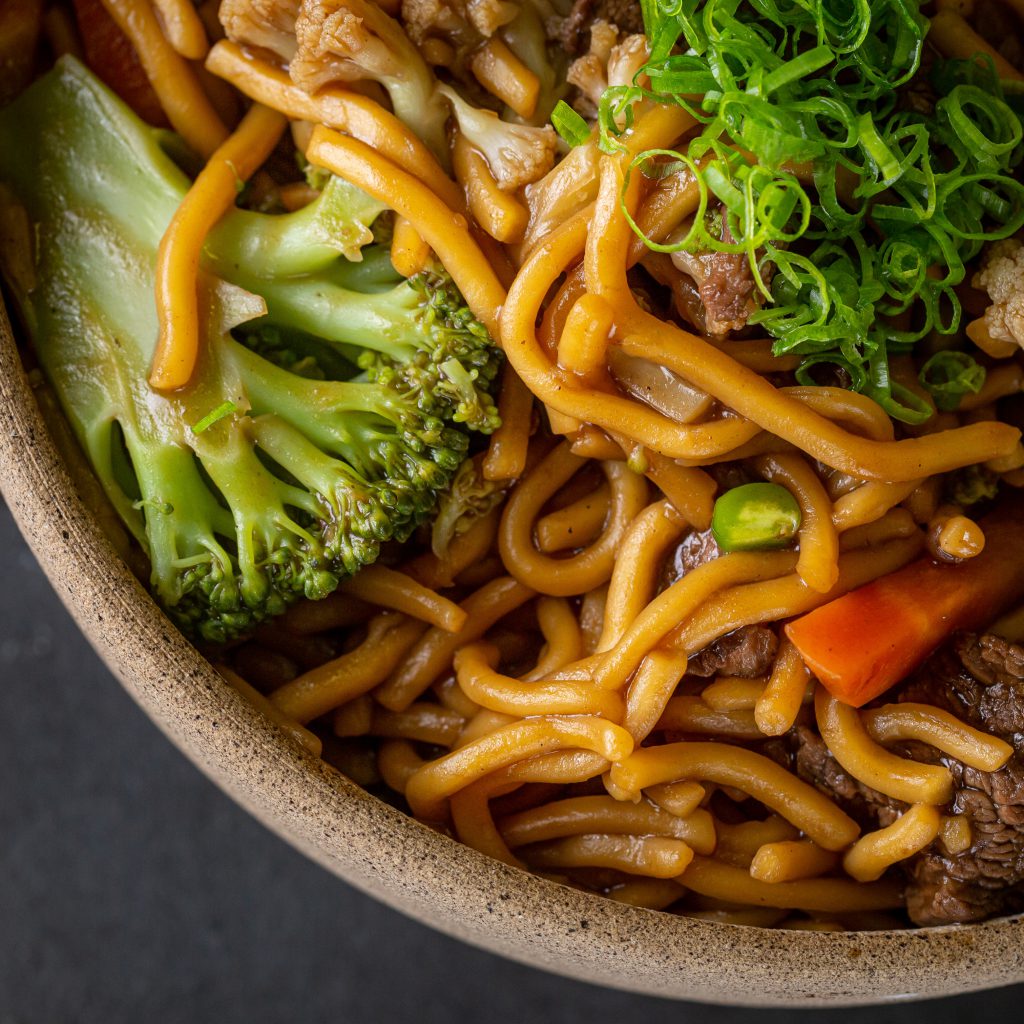
Understanding the history and evolution of ramen can add depth to your appreciation as you slurp on those delicious noodles. Ramen has been a staple in Japan for over a century, but its roots go back to China. The term ramen was initially used to refer to two dishes: shina soba and chūka soba, both meaning “Chinese noodles” with different connotations.
Noodles were adopted by Japan towards the end of the 19th century, during the country’s industrial revolution. It was a gem for busy workers who didn’t have the time to prepare a wholesome meal for themselves every day. Once it caught on, ramen evolved from a simple, inexpensive food to a Michelin-starred dish throughout the years.
Today, small ramen shops can be found in various locations, including subway stations, residential buildings, and storefronts. Ramen is also considered a top contender for the national dish of Japan, with museums dedicated to its history. It’s even voted the greatest Japanese invention of the 20th century.
Although there are rules as to what counts as ramen, there’s no one singular recipe. Rather, it’s a technique in which different groups of ingredients are put together, just like Italian pizza. For that reason, it’s not possible to have a comprehensive guide to all the different types of ramen out there.
How to Categorize Ramen
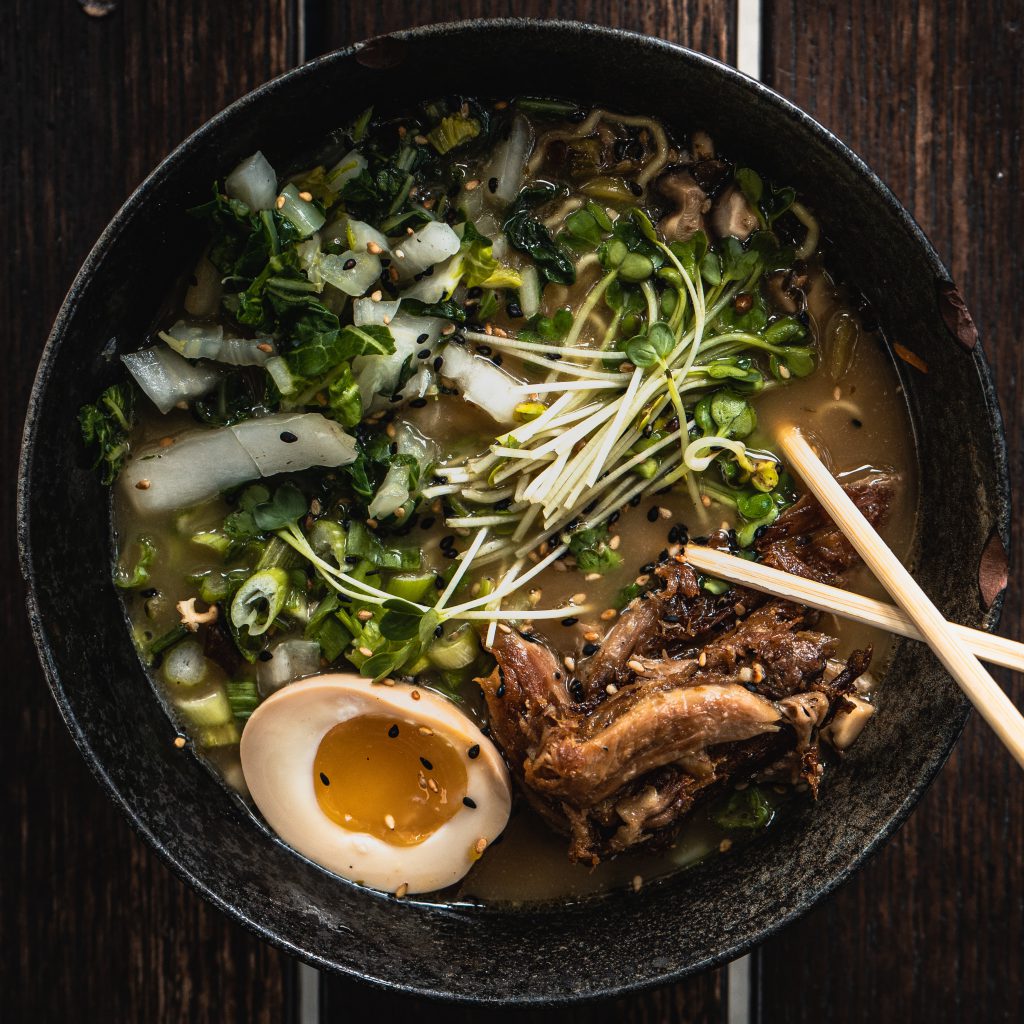
Ramen is often divided into four categories: shoyu (soy sauce), shio (salt), miso (fermented bean paste), and tonkotsu (pork).
While these four categories are sometimes considered distinct in Japanese-style ramen, there are many instances where they overlap and diverge. Plus, modern ramen chefs have departed from these traditional categories over the last century and are now incorporating a variety of ingredients, such as clams and blue algae, to create unique and flavorful soups.
Nevertheless, shoyu, shio, miso, and tonkotsu are the main types of ramen, at least for the average Joe, as they tell the main flavor of the bowl. If you’re interested in learning how to make each of these basic delicious ramen styles with different flavorings and toppings, this cooking class in Osaka is just right for you.
That being said, a more accurate way to categorize ramen is to consider the heaviness of the broth, the base ingredients, and the seasoning. This classification system, used by some Japanese sources, covers nearly all types of soup-based ramen.
Ramen Broth Thickness
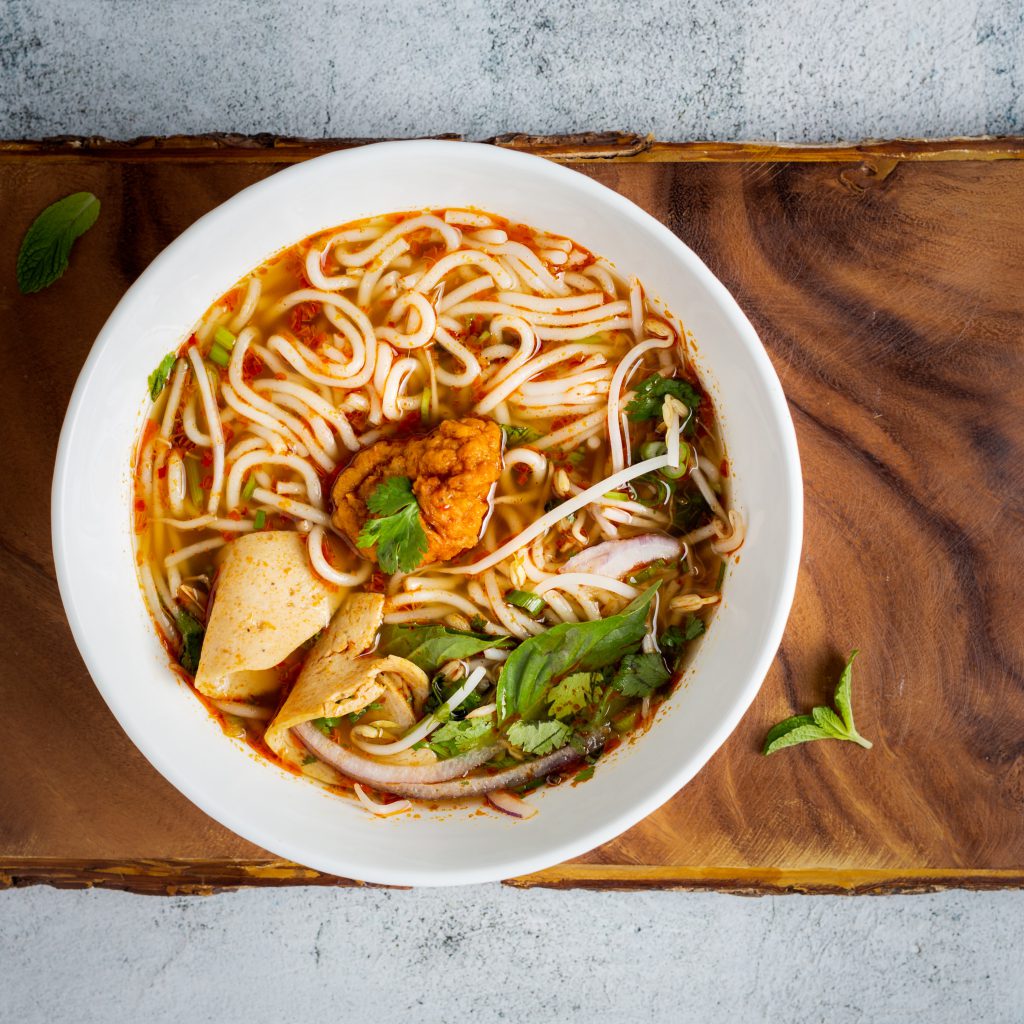
Ramen broths can be classified as either kotteri (rich) or assari (light). Kotteri broths are heavy, sticky, thick, and often opaque white, thanks to the high levels of emulsified fats, proteins, and minerals. Kotteri is also known by its Chinese name, paitan.
On the other hand, assari or chintan broths are clear and thin and typically flavored with a greater proportion of vegetables, fish, or briefly simmered bones to maintain clarity.
Broth Base

The broth base is the key ingredient used to make the ramen soup. It’s usually made of animal bones such as pork, chicken, beef, or fresh fish.
In addition to the rich and savory meat broths, ramen can also be made with lighter broths that feature ingredients like sea kelp, dried seafood, or vegetables.
If you’re a vegetarian, this vegetarian ramen cooking class in Tokyo is a great opportunity to learn how to make delicious meat-free ramen.
Along with the main ingredient, ramen broths are flavored with various aromatic ingredients such as charred onions, garlic, ginger, fresh scallions or leeks, or mushrooms. As you see, it’s really up to the chef’s creativity.
Seasoning
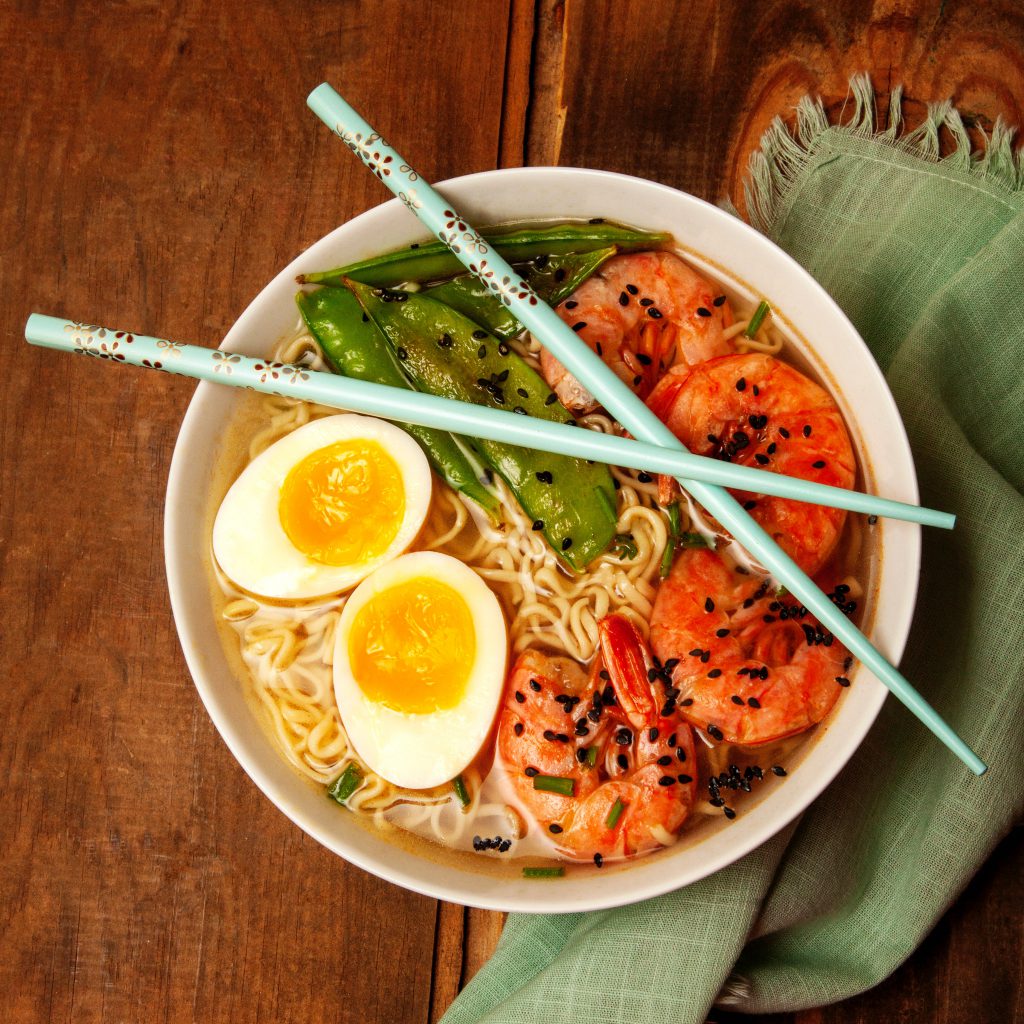
The seasonings can also be blended directly into the broth, but it is added to each bowl separately in many restaurants so that you can customize your ramen to the best. Here are the most common ramen seasonings.
Shoyu
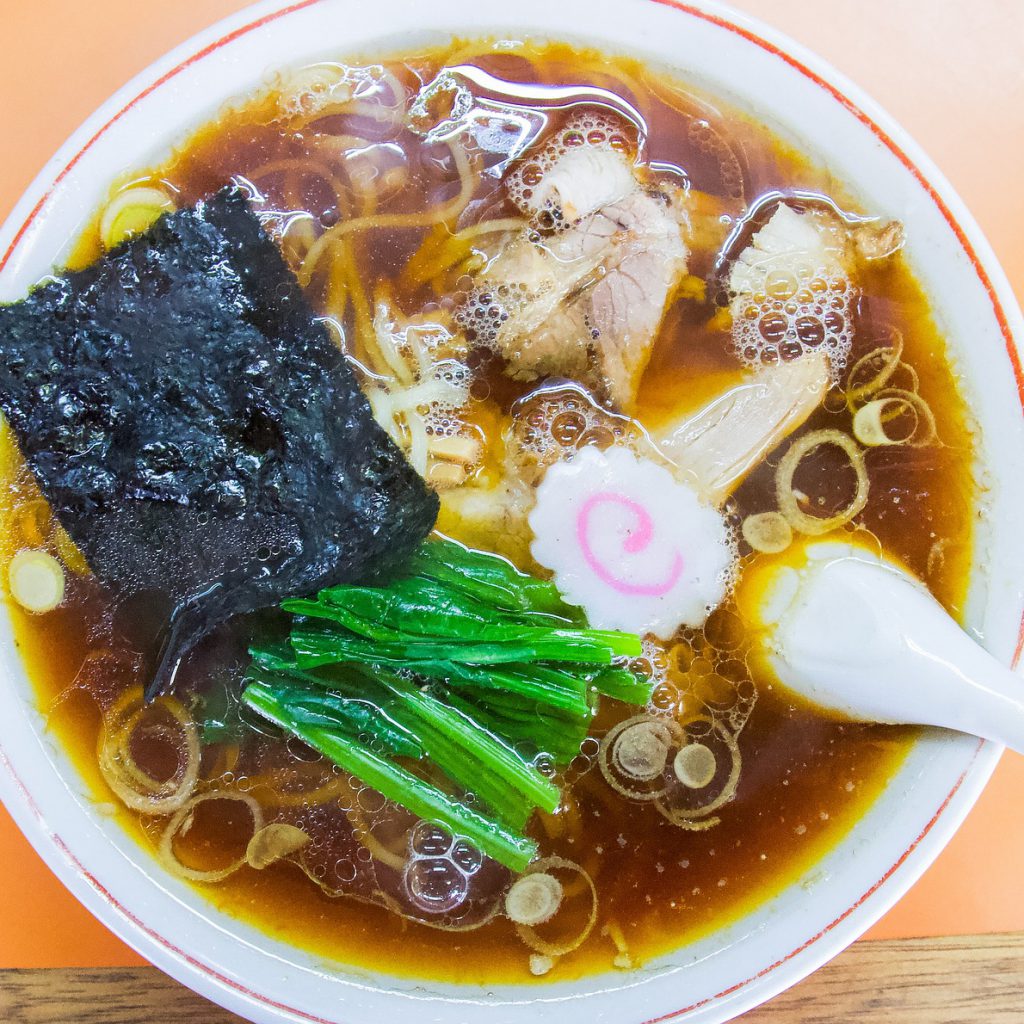
Originating from Yokohama, Japanese soy sauce is a popular seasoning in the Kanto region of central Japan. It was traditionally used with clear to brown broths made from chicken, seafood, or occasionally pork or beef. However, these days shoyu is used liberally by ramen chefs across Japan so much so that it’s not rare to find creamy tonkotsu pork broths flavored with shoyu.
Shio
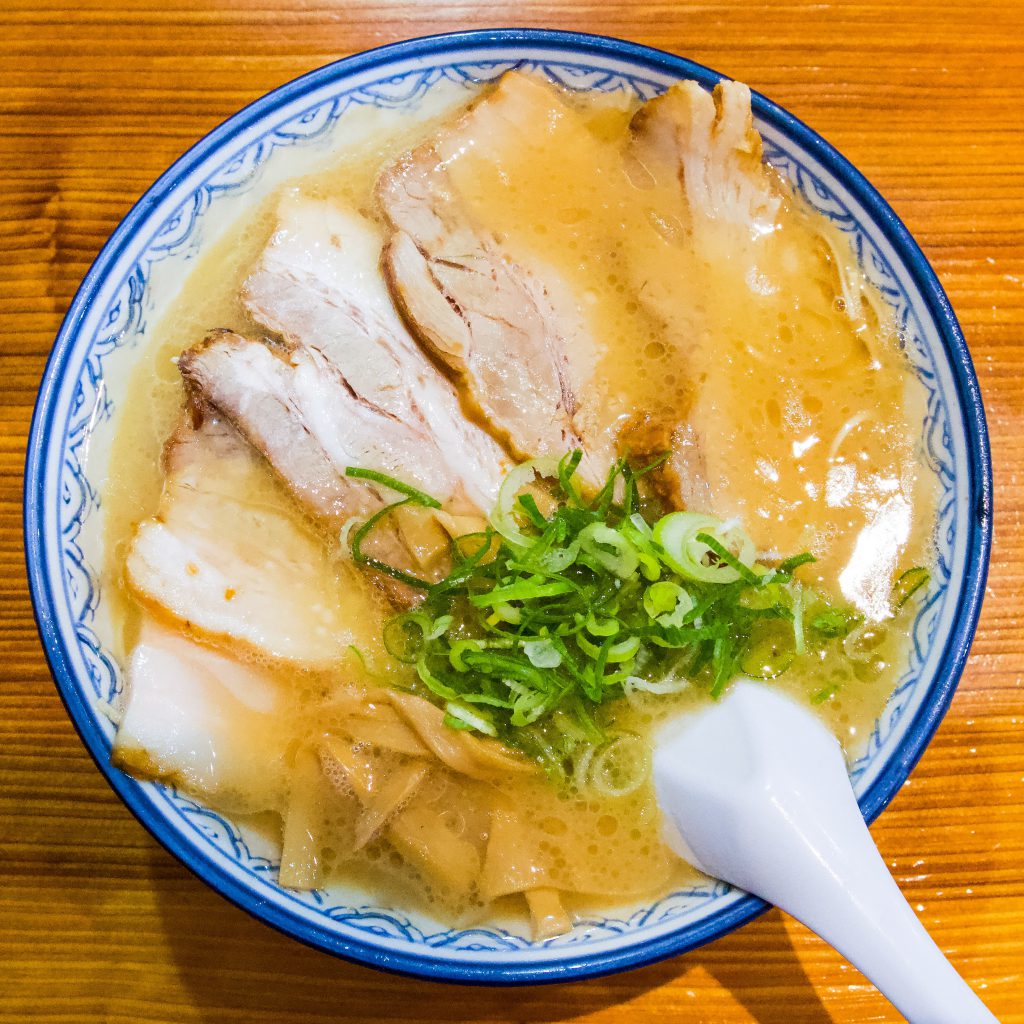
Sea salt is the original form of seasoning used in ramen and has roots in Chinese noodle soups. Shio ramen is a favorite in Hakodate, a city in the southern Hokkaido region. Here the cuisine was heavily influenced by Chinese cuisine. On top of that, the mild climate is suitable for lighter, salt-based soups.
Miso
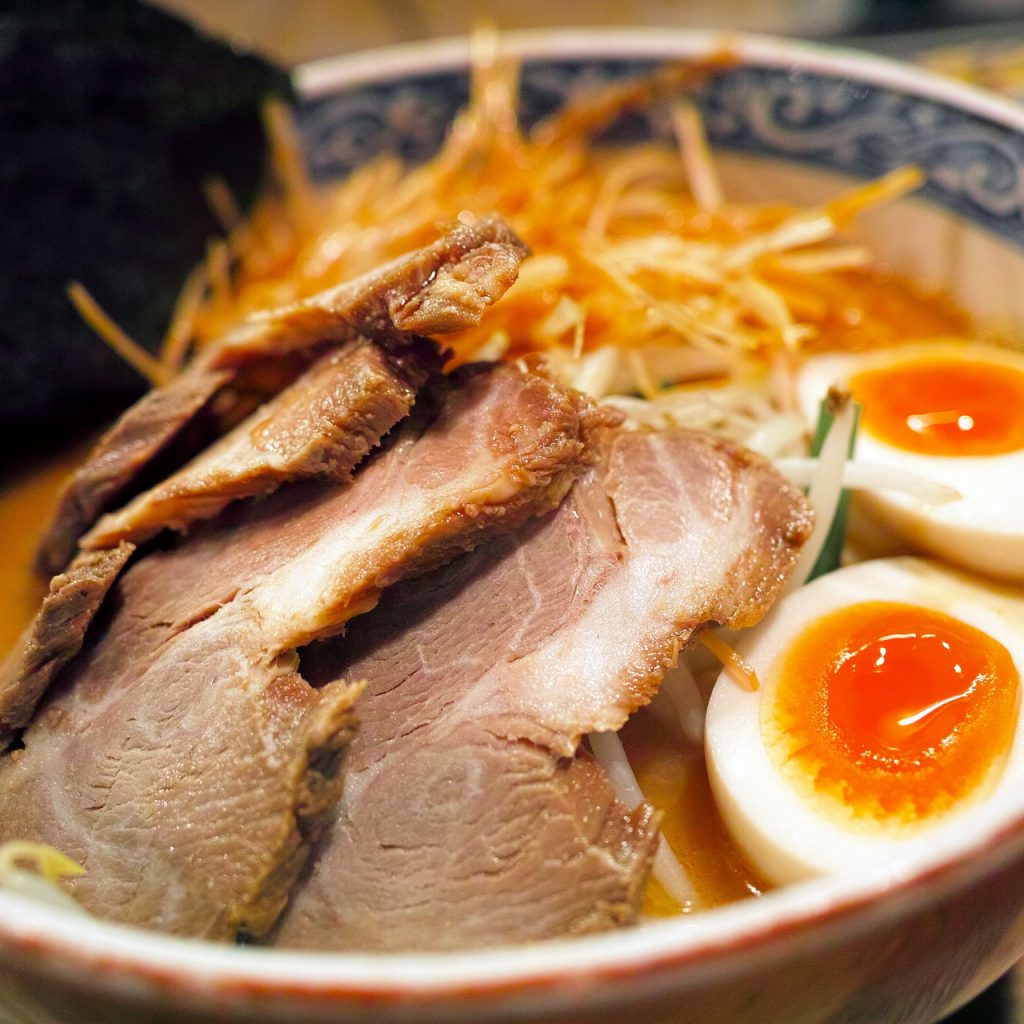
Miso ramen is a relatively new type of ramen. Originating in northern Hokkaido, where the colder climate calls for a more robust and hearty bowl of soup, miso ramen gained popularity in the mid-1960s and caught on immensely both in Japan and around the world.
It’s typically paired with heavier and more peculiar toppings like sweet corn, stir-fried pork belly, and bean sprouts. If you’re looking to learn how to make authentic miso ramen — plus gyoza, the delicious Japanese dumplings — be sure to check out this miso ramen cooking class in Tokyo.
How to Mix and Match Ramen Seasonings?
Typically, shio is used to add a delicate flavor to lighter broths, while miso is used to create a richer, more substantial broth. Shoyu, on the other hand, falls somewhere in between and is often used to achieve a balanced flavor profile.
However, there are many exceptions to these rules. For example, it’s not uncommon to find rich bone broths seasoned with salt or lighter seafood broths flavored with miso.
Ramen Seasonings and Condiments
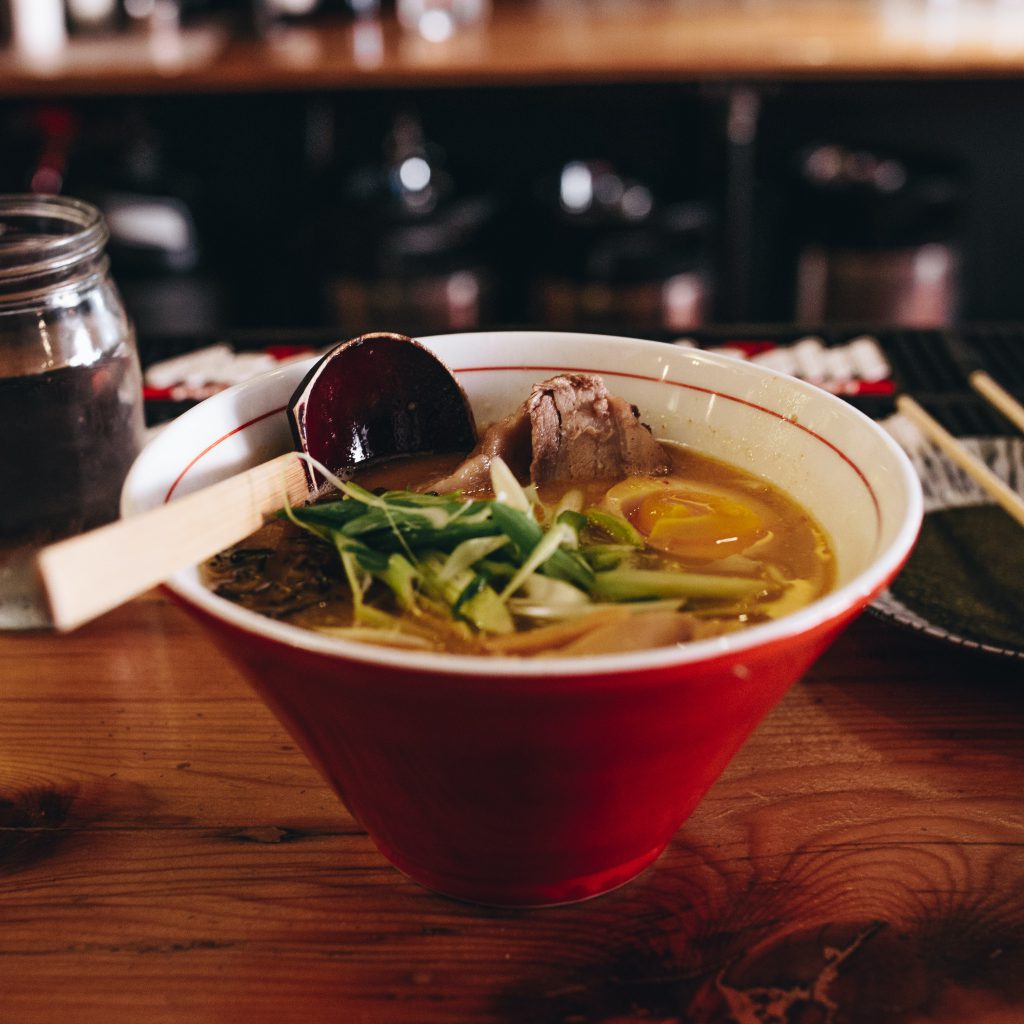
In some cases, a bowl of ramen is finished with a small amount of flavorful oil like chili or sesame oil or fat like pork fat. You can also find lesser-known broth flavorings, like sesame paste or dried bonito powder. Additionally, many ramen shops use monosodium glutamate (MSG), which is widely accepted in Japan but considered controversial in the United States.
Ramen Toppings
Toppings in ramen are not just an added bonus, but rather a defining feature. They can range from basic vegetables and spices to more elaborate meats and sauces that are specially prepared in advance. Here are some popular options that you might come across.
Chashu
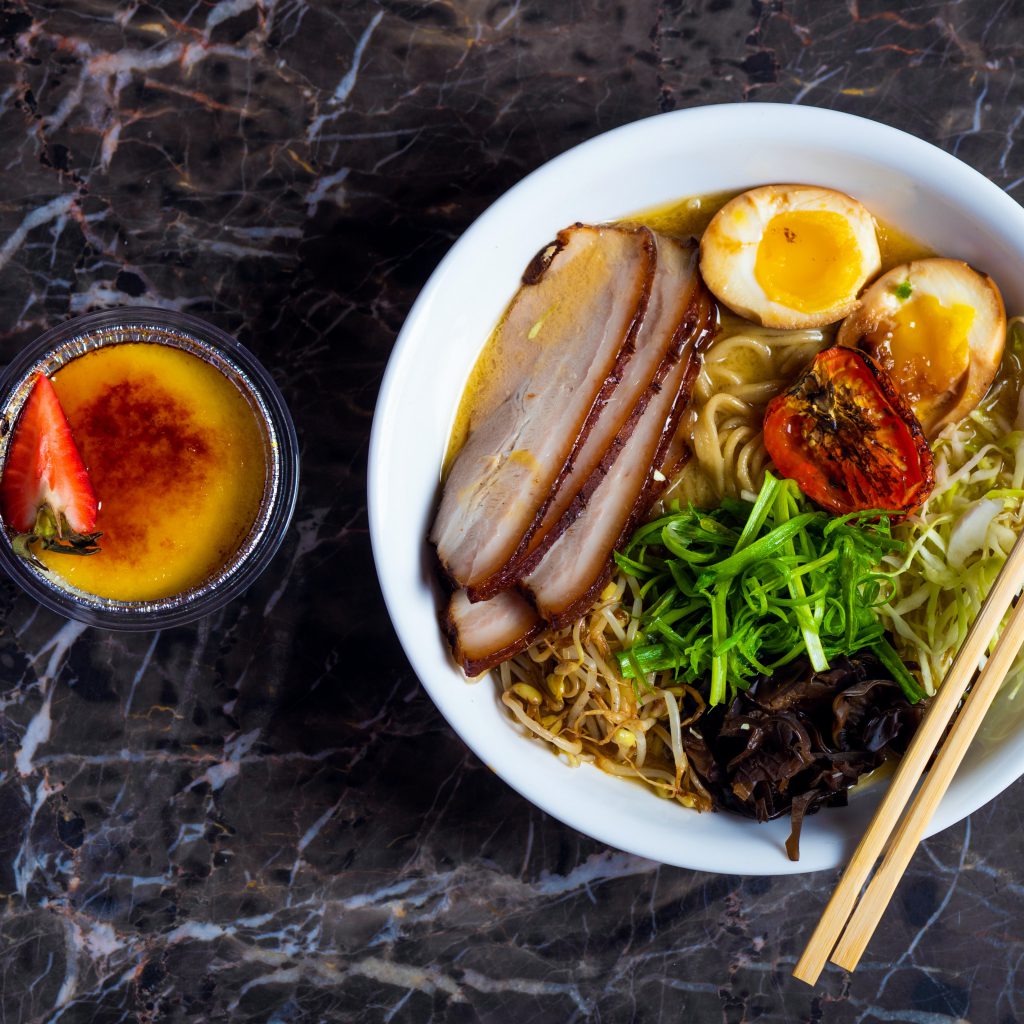
Chashu is a staple topping for tonkotsu ramen, consisting of thin slices of fatty pork that have been slowly simmered or braised. It is a popular choice for many, but other options like chashu beef, chicken, or duck are also available. A couple of slices of this succulent meat will elevate your soup, but feel free to adjust it to your taste.
Nori or Wakame

Another staple topping in ramen, nori, or wakame represents the flat, rectangular, dried seaweed leaves. The most common type used is nori, which is made from dried red algae. Another option is dried brown algae or wakame. They both impart a distinct, ocean-like flavor to the dish.
Ajitama or Nitamago

Ajitama, a savory-flavored egg with a runny yolk, is a must-have ingredient in most traditional ramen recipes. Its brownish exterior sets it apart from regular soft-boiled eggs. If you prefer a firmer texture, nitamago, a hard-boiled egg, is another option.
Kamaboko
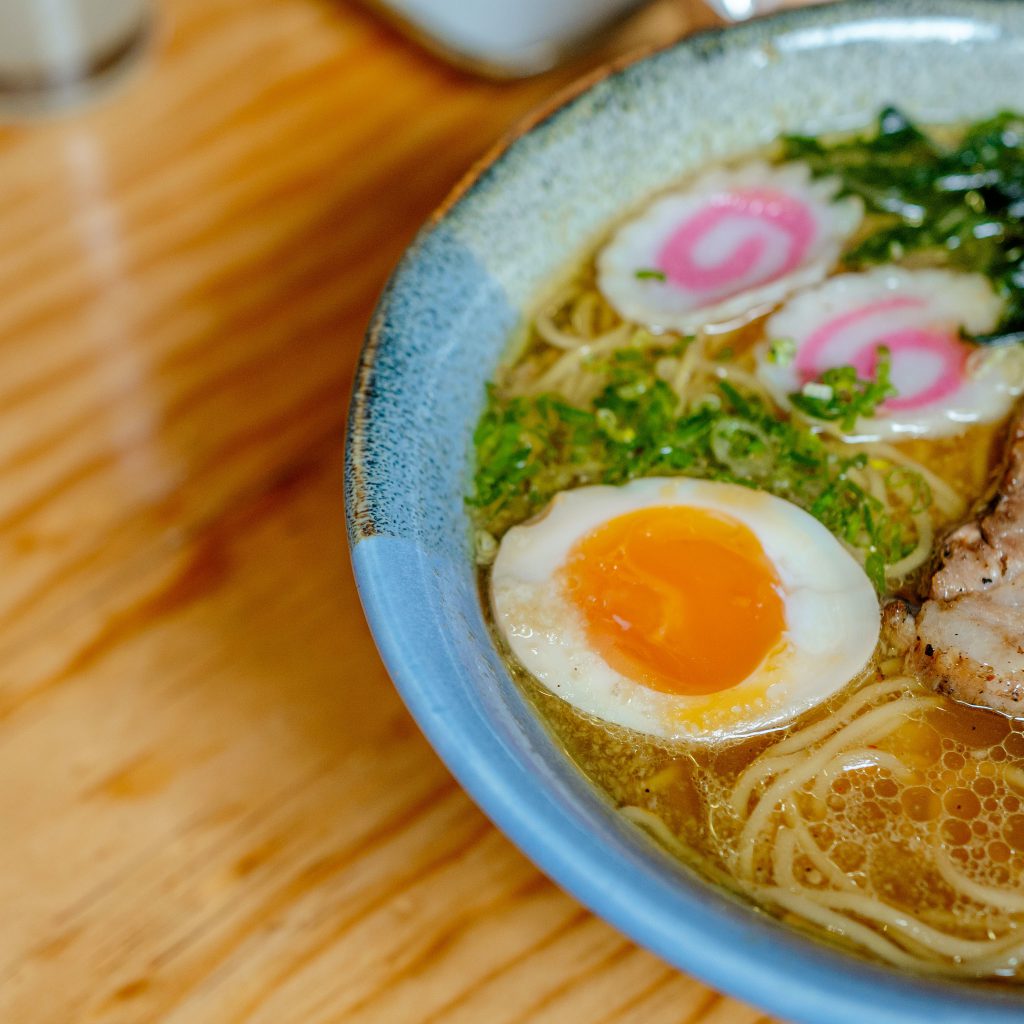
Kamaboko, a type of soft and chewy fish cake, is a common ingredient in many authentic ramen recipes. Made from surimi or kane (white fish paste), it’s usually found in white and pink shapes for a cute and playful look.
And Others…

Apart from these delicacies, you can have your ramen topped with chopped green onions, garlic, sesame seeds, diced onions, corn, bok choy, various mushrooms, seafood, and meats. Seriously, the varieties are endless.
Lastly, the Ramen Noodles
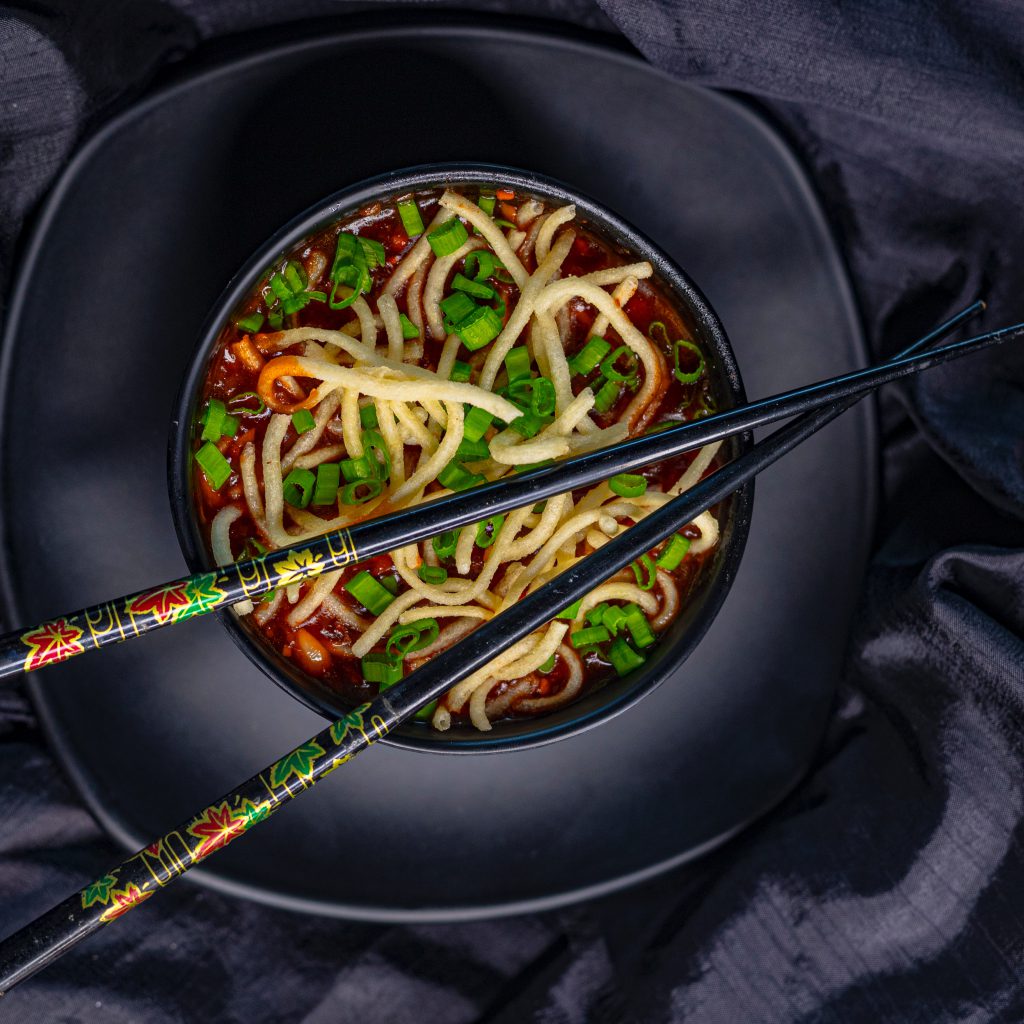
Ramen noodles are not just any noodles. In order to be classified as ramen, they must include two key ingredients: wheat and kansui (alkaline salts).
While there is room for creativity in the ramen-making process, such as the use of additional additives or variations in the ratios of wheat and kansui, the presence of these two ingredients is not negotiable because kansui and gluten work like magic to create that one-of-a-kind bounciness that characterizes ramen noodles. That’s why udon, rice noodles, and pasta, while delicious, do not fall under the category of ramen.
The shape of ramen also varies; it can be thin, thick, wavy, or wide and flat. Usually, wavy and thick noodles are used in heavier soups, as the soup sticks on them better than on the thin, flat ones. This creates a harmonious interaction between the noodles and the soup in the bowl.
Most Popular Ramen Types
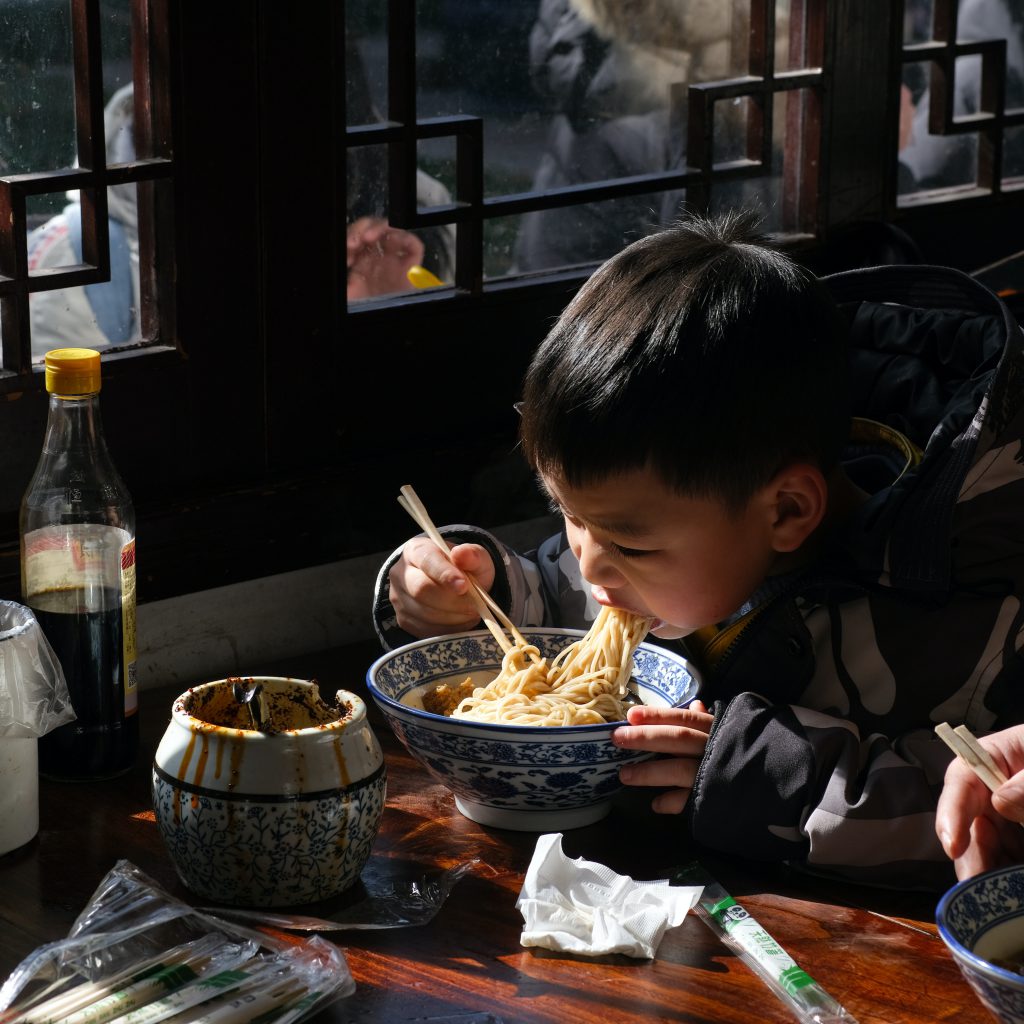
In addition to the well-known shoyu, miso, shio, and tonkotsu ramens, many regional specialties have made their way into menus across the country. Let’s take a look at the most popular ramen types.
Akayu Ramen
The origin of Karamiso spicy miso ramen can be traced back to the Akayu area in inland Yamagata, where it was first served in a restaurant named Ryu-Shanghai in 1960.
The creation of the dish was inspired by the restaurant owner’s family mixing leftover ramen soup with miso paste. Over time, this simple mixture evolved into a spicy blend of miso, garlic, and chili.
Today, the spicy mix is added on top of the ramen in a “ball” form, allowing customers to adjust the spiciness to their desired level.
Jiro Ramen
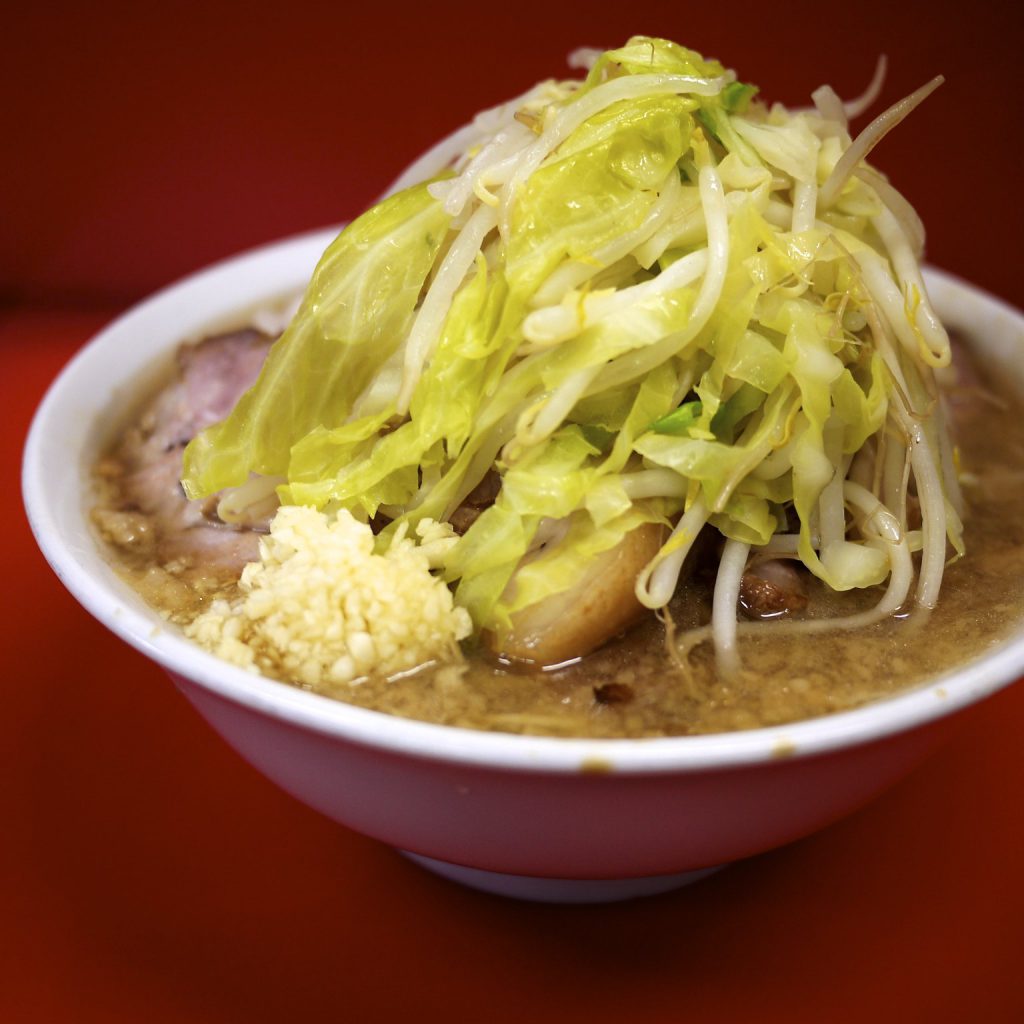
By Hunter Nield
Jiro’s style of ramen has earned a controversial reputation in Japan, dividing opinions on its unique characteristics.
The name refers to the specialty ramen of the cult ramen shop of the same name. The shop is famous for its large portions, gruff staff, and untypical ordering system, which includes a series of tongue twisters.
Ramen is a vibe rather than a single recipe or dish, and jiro ramen has its own fan base regardless of its connotations. Even though the atmosphere in a Ramen Jiro shop can be a bit intimidating, with the unwritten rules and lingo, don’t let that deter you from trying out this unique type of ramen. Each Ramen Jiro shop has its own distinct personality, and the experience is like no other ramen joint you’ve been to.
Tonyu Ramen
While most ramen broths are typically made from pork or chicken bones, vegetarian options are also based on vegetable or mushroom broth.
Tonyu ramen is a unique variant made with soy milk, which is a common ingredient in Asian cuisine. It is said to have originated from a restaurant called Mamezen in Kyoto, where it is believed that the broth tastes best when made from fresh soybeans. The soy milk provides a sweet flavor to the broth while giving it a similar creamy texture found in other white, opaque broths.
The original recipe from Mamezen combines soy milk with dashi, which is a broth made with dried bonito fish flakes and kombu seaweed. Some restaurants may also offer a vegan version of this ramen.
Tsukemen Ramen
Tsukemen Ramen was first created in 1961 by Tokyo restaurant owner Kazuo Yamagishi and has since grown in popularity. It’s widely available across Japan and especially loved in Los Angeles, USA.
It’s a unique take on the traditional Japanese noodle dish, served differently from its counterparts. Unlike regular ramen, the soup and noodles are served in separate bowls; you pick up the noodles and dip them into the soup with each sip.
The dish typically uses soba or udon noodles and is known for its strong flavor, but you can lighten it by adding hot water. The broth is made up of dashi and other flavorful ingredients and is often accompanied by toppings such as boiled eggs, nori, menma, and chashu.
Kare Ramen
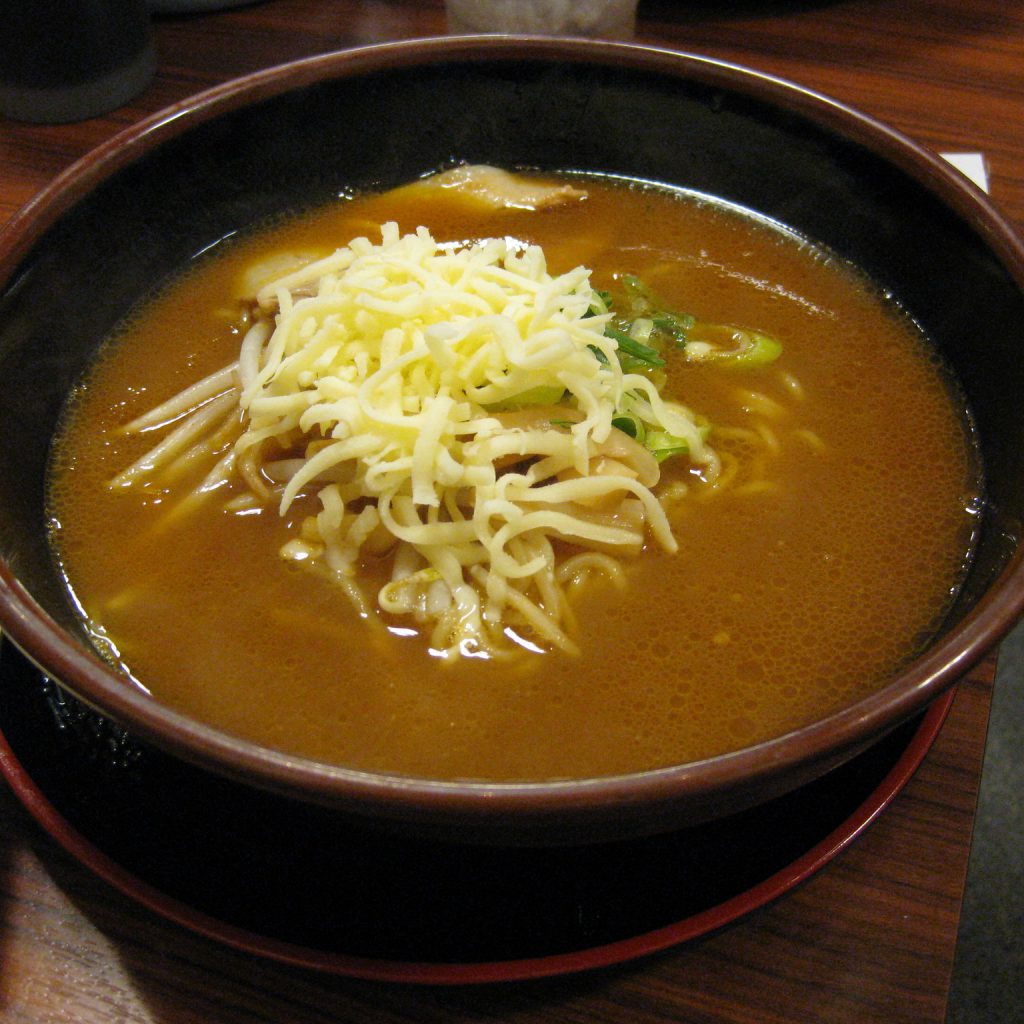
By hiroya ishii
Kare is a unique type of ramen with a curry flavor, and its origin remains shrouded in mystery. Some people credit its invention to the city of Muroran in 1965, while others claim it originated in the city of Sanjō over 80 years ago. There is also a theory that it originated in Katori.
The broth for kare ramen is made from pork bones and vegetables and seasoned with curry to give it its signature flavor. The noodles used are typically curly and thick, and the toppings may include chashu, bean sprouts, and wakame.
Hakata Ramen
Hakata ramen is a variety of tonkotsu ramen. It comes from Fukuoka, a region in Southern Japan.
Hakata raen uses thin, straight, and resilient noodles, and unlike other types of ramen, it does not have a lot of toppings as its broth is full of flavors. You’ll taste only simple ones like sesame seeds, crushed garlic, and spicy pickled mustard greens.
Kagoshima Ramen
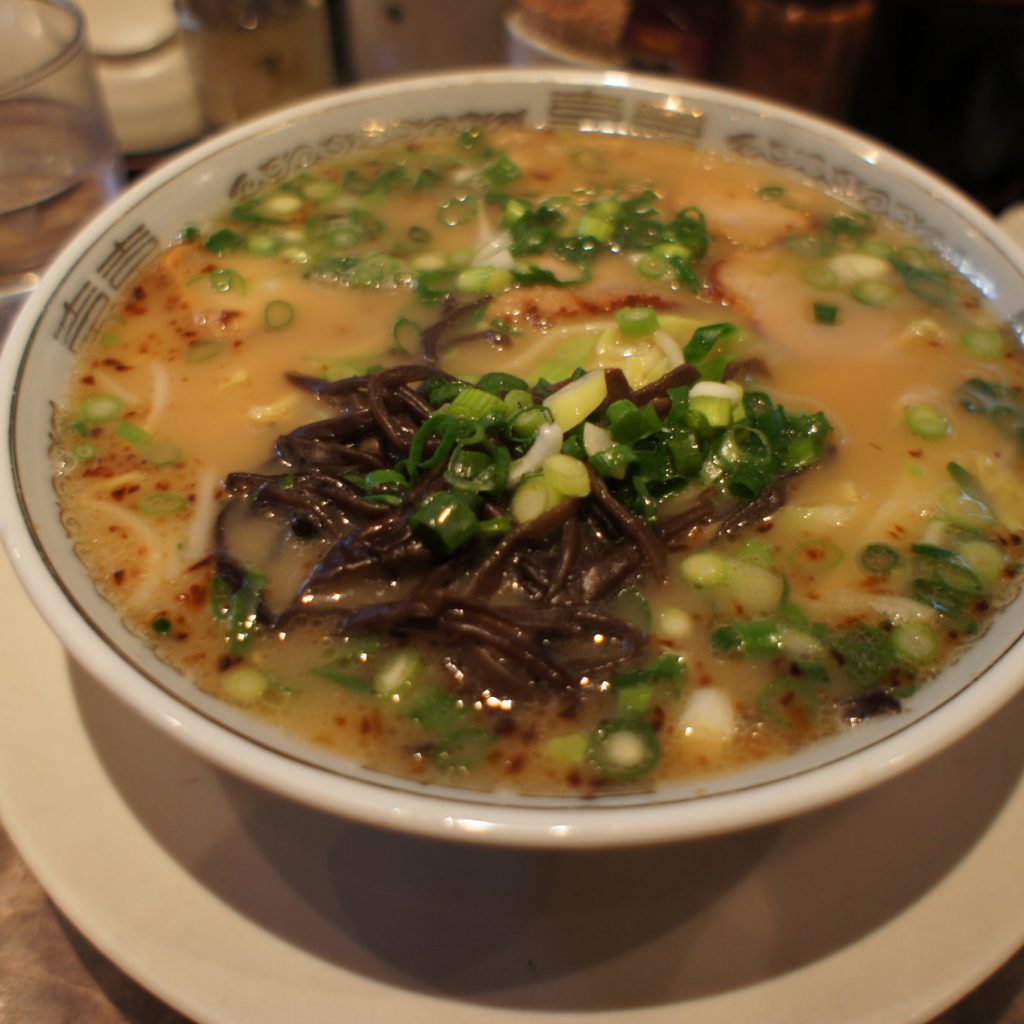
By d_saigou
Kagoshima ramen is a variety that hails from Kyushu. It’s known for its light broth, made with a combination of dried sardines, dried mushrooms, kelp, chicken stock, and vegetables. The noodles used in this dish are usually thick, while the toppings often include tender, juicy chashu made from the region’s prized kurobuta pork and pickled daikon.
Kurume Ramen
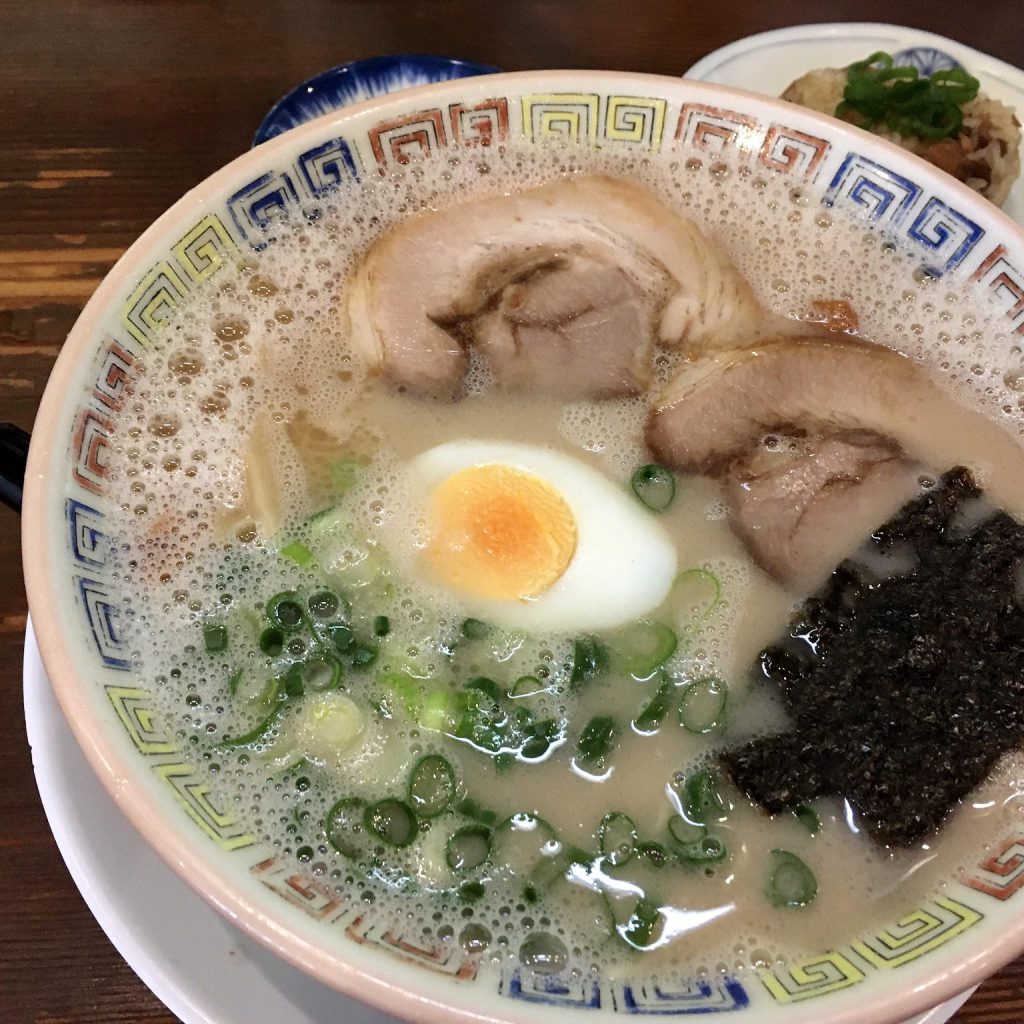
The Kurume ramen broth is made of pig heads and feet, resulting in quite a rich flavor. It resembles Tonkotsu ramen in the sense that both utilize pork bones in their broths. It’s popularly topped with nori seaweed and crispy fried pig fat.
Asahikawa Ramen
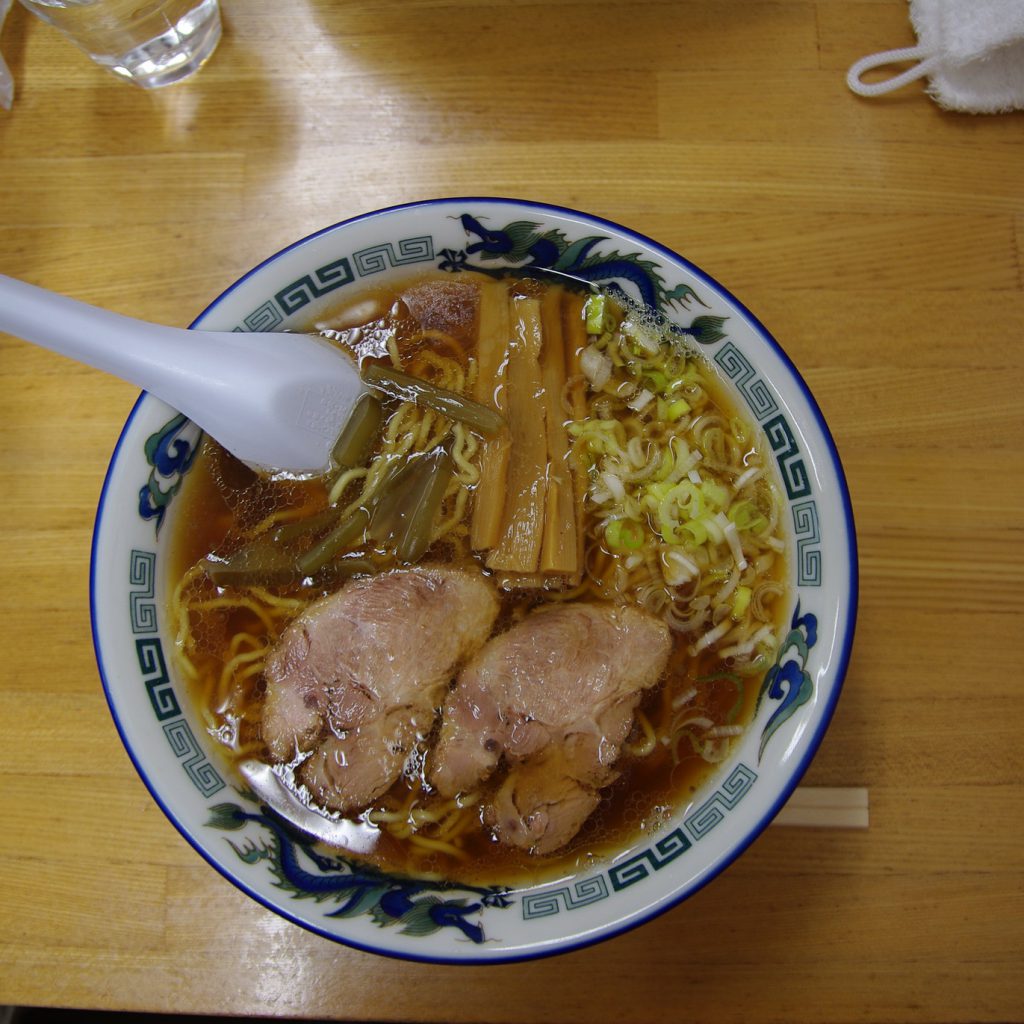
By Yuko Hara
In the city of Asahikawa in Hokkaido, shoyu-based broths are the specialty. Unlike Sapporo’s miso-based broth or Hakodate’s salt-based broth, Asahikawa is known for its soy sauce-based broths.
The first thing you’ll notice about this ramen is its oily consistency, visible in the layer of oil present on the surface of the soup.
The noodles used in the dish are thin, hard, and wavy, with toppings such as green onions, pork, bamboo shoots, and eggs.
Sapporo Ramen
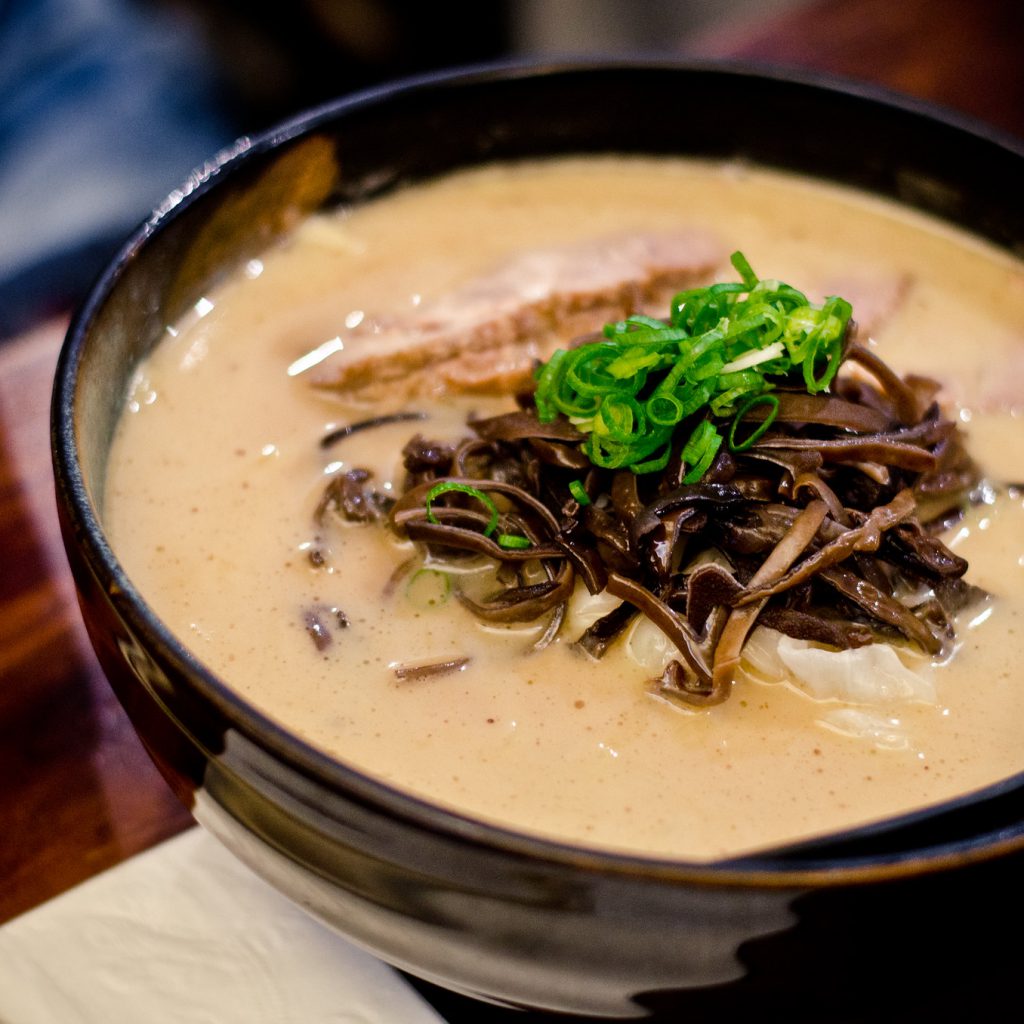
By churian
Sapporo ramen is a special type of Miso ramen that hails from Sapporo, the capital city of Hokkaido. Its broth is made from tonkotsu pork bones and paired with wavy noodles, which work wonders for delivering rich flavors to your palate. It’s a hearty dish that locals particularly enjoy during the colder months of the year.
When it comes to toppings, Sapporo ramen offers a lot of options. Bean sprouts, garlic, chopped pork, and butter are common choices, while some people may also add seafood, such as crab, squid, shrimp, or scallops to the mix.
Tokyo-Style Ramen
Before the rise in popularity of tonkotsu ramen, Tokyo-style pork and shoyu ramen was one of the most widely known types of ramen globally.
It features noodles that are slightly curly and moderately wide, cooked in a broth made of a combination of pork and chicken. Dashi, a broth made from dried, smoked bonito flakes and sea kelp, is often used to flavor the broth. It’s a blend of Chinese-style broth with a lighter Japanese broth. It’s typically seasoned with shoyu, resulting in a medium-bodied broth.
Kitakata Ramen
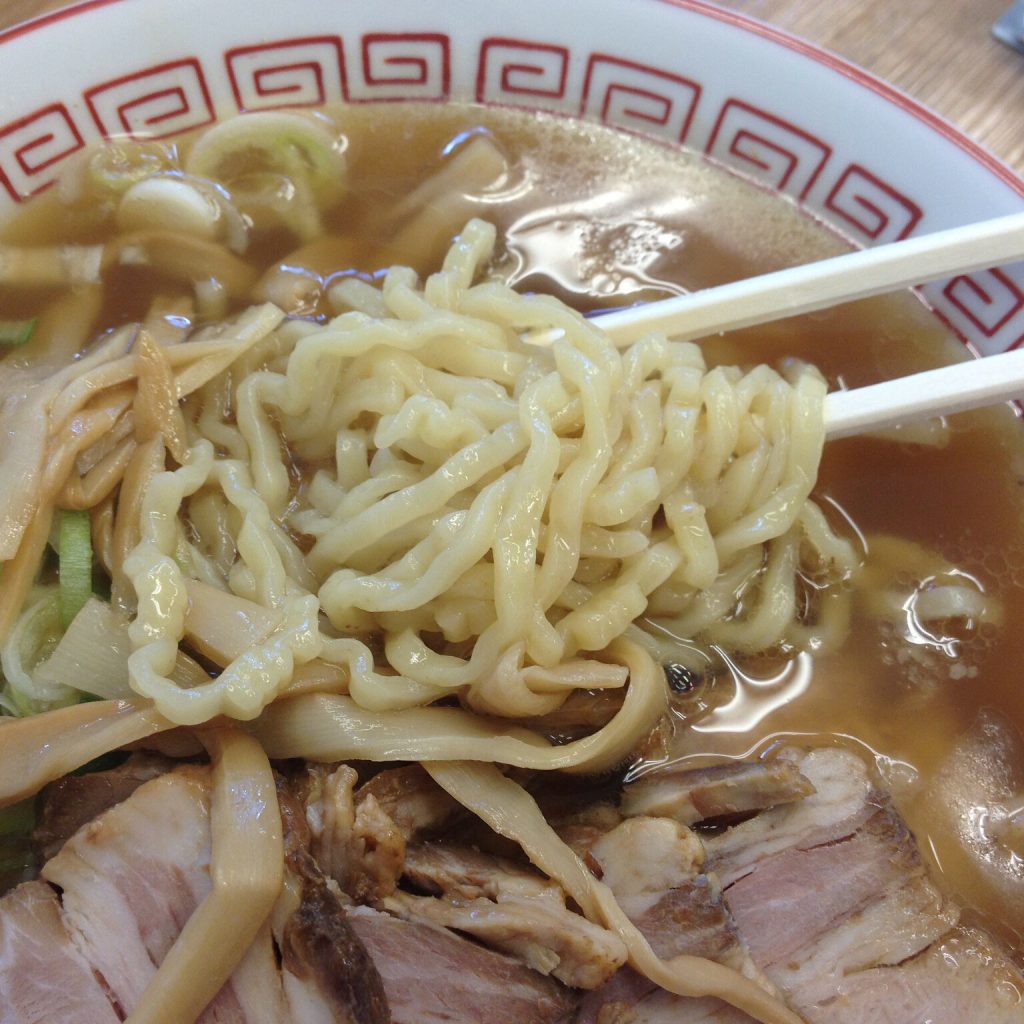
By lazy fri13th
Kitakata ramen is known for its thick, flat, curly noodles and broth made with a rich blend of soy sauce and flavors from niboshi (sardines) and tonkotsu (pork bones). The use of soy sauce and niboshi, both produced locally in Kitakata with high quality, gives the ramen its unique taste.
Once the noodles are placed in the broth, the dish is typically garnished with toppings such as spring onions, thinly sliced roasted pork (chashu), naruto (groundfish), and fermented bamboo shoots.
Interestingly, Kitakata holds the highest number of ramen shops per capita in Japan. Every February, the town holds its annual Ramen Festa, where famous ramen chefs showcase their culinary skills and creations.
Ramen Eating Etiquette
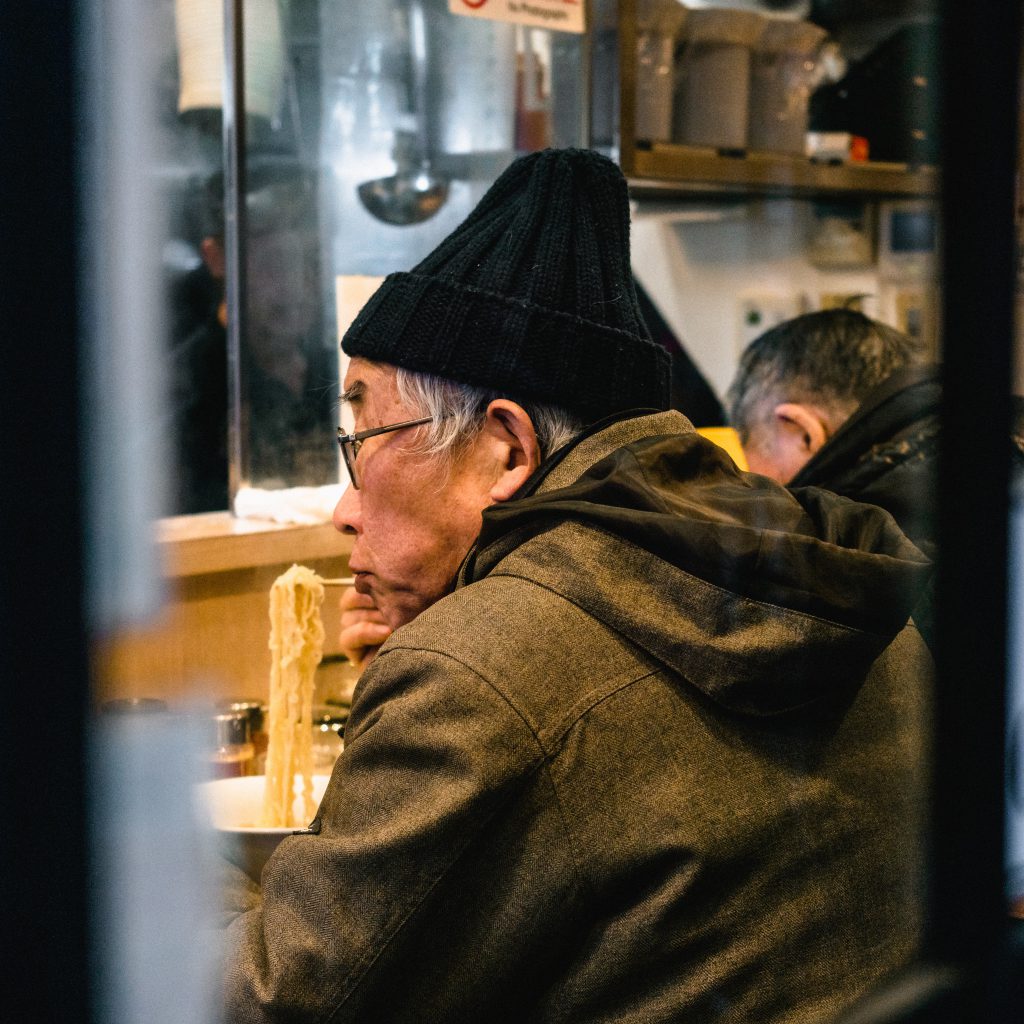
Dedicated ramen chefs take noodle-eating etiquette very seriously. They say the perfect noodles only remain fresh and tender for five minutes after they are added to the hot broth. Wait any longer, and the noodles get overcooked and mushy. Therefore, it’s better to start eating as soon as the bowl arrives and continue slurping on until you’re done.
If you’re still craving more after finishing your bowl of ramen, simply request a kaedama, which is an additional portion of noodles that can be added to the remaining broth in your bowl.
However, there’s an unwritten rule in the bustling ramen shops of Tokyo and other major Japanese cities: devour your bowl of noodles with gusto and then make a swift exit. This is probably a custom from when ramen shops used to feed the busy workers. Even though times have changed, it’s still considered good etiquette not to linger and occupy the limited space after finishing your meal.
And yes, slurping is customary in Japan. It helps cool down the noodles, and it also shows the chef some love. Plus, by taking in more air through your nose, you amplify the flavors in your bowl.
You’ll be served a spoon, but you can drink straight from the bowl by holding it with both hands. This lets you smell the broth up close, enhancing the aromatic experience. But be careful, some soups are piping hot.
And lastly, if you order ramen to go, you’ll get the noodles separately. You can later reheat the broth and add the noodles. However, many ramen shops do not allow take-out orders.
Happy Slurping!
Ramen is more than just a bowl of noodles and broth; it’s a culinary experience that transports you to the streets of Japan. Whether it’s the rich and creamy tonkotsu, the salty and savory shoyu, or the spicy and tangy karamiso, there’s the right flavor for everyone.
With its origins rooted in Chinese cuisine, the Japanese have taken this dish and made it their own, creating a diverse array of styles and flavors that reflect their local cultures and tastes.
So, next time you’re craving a comforting bowl of noodles, explore the world of ramen and experience a taste of Japan right at your fingertips. Don’t be afraid to try something new, as you never know what exciting flavor combination you might discover.


